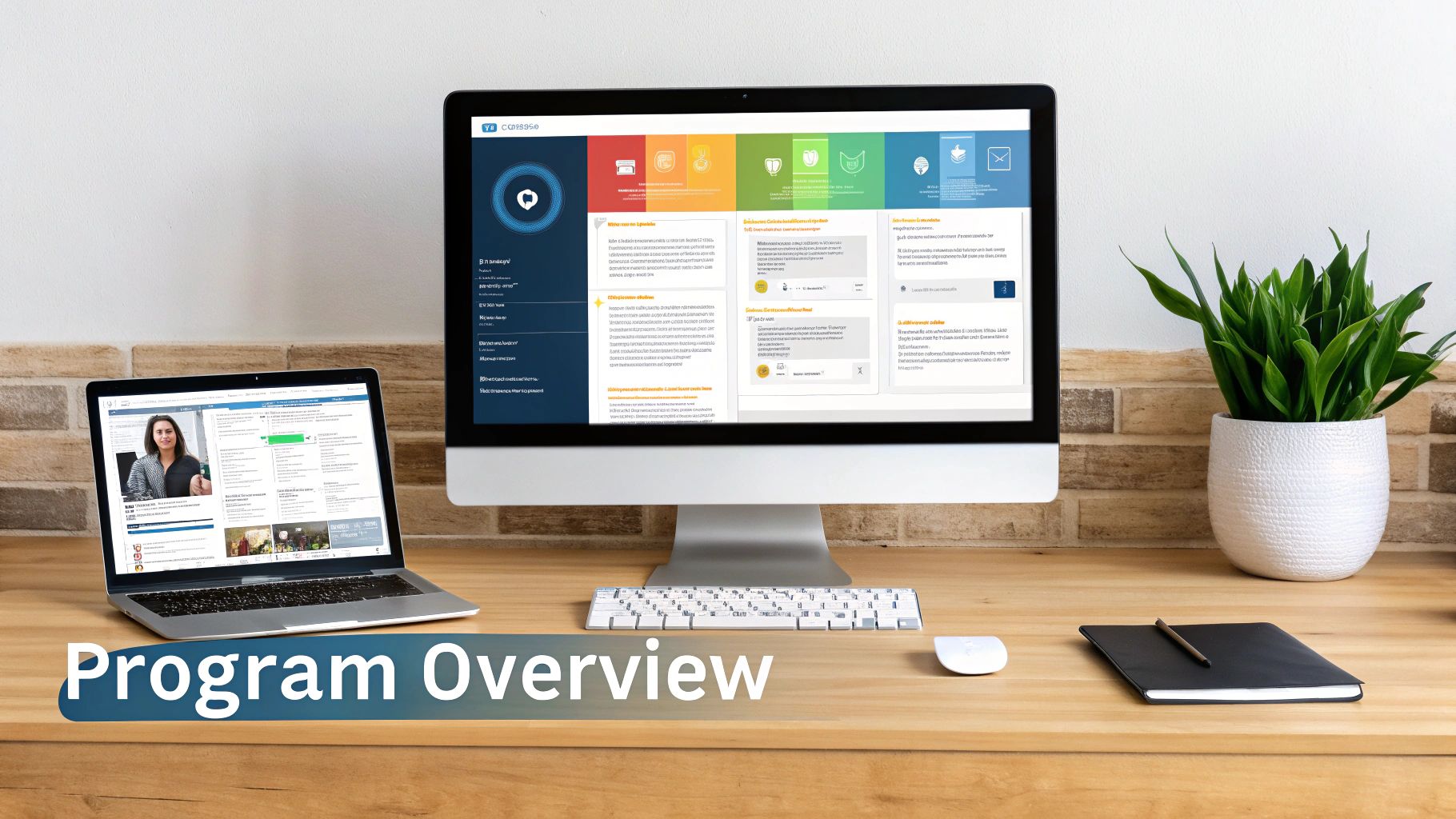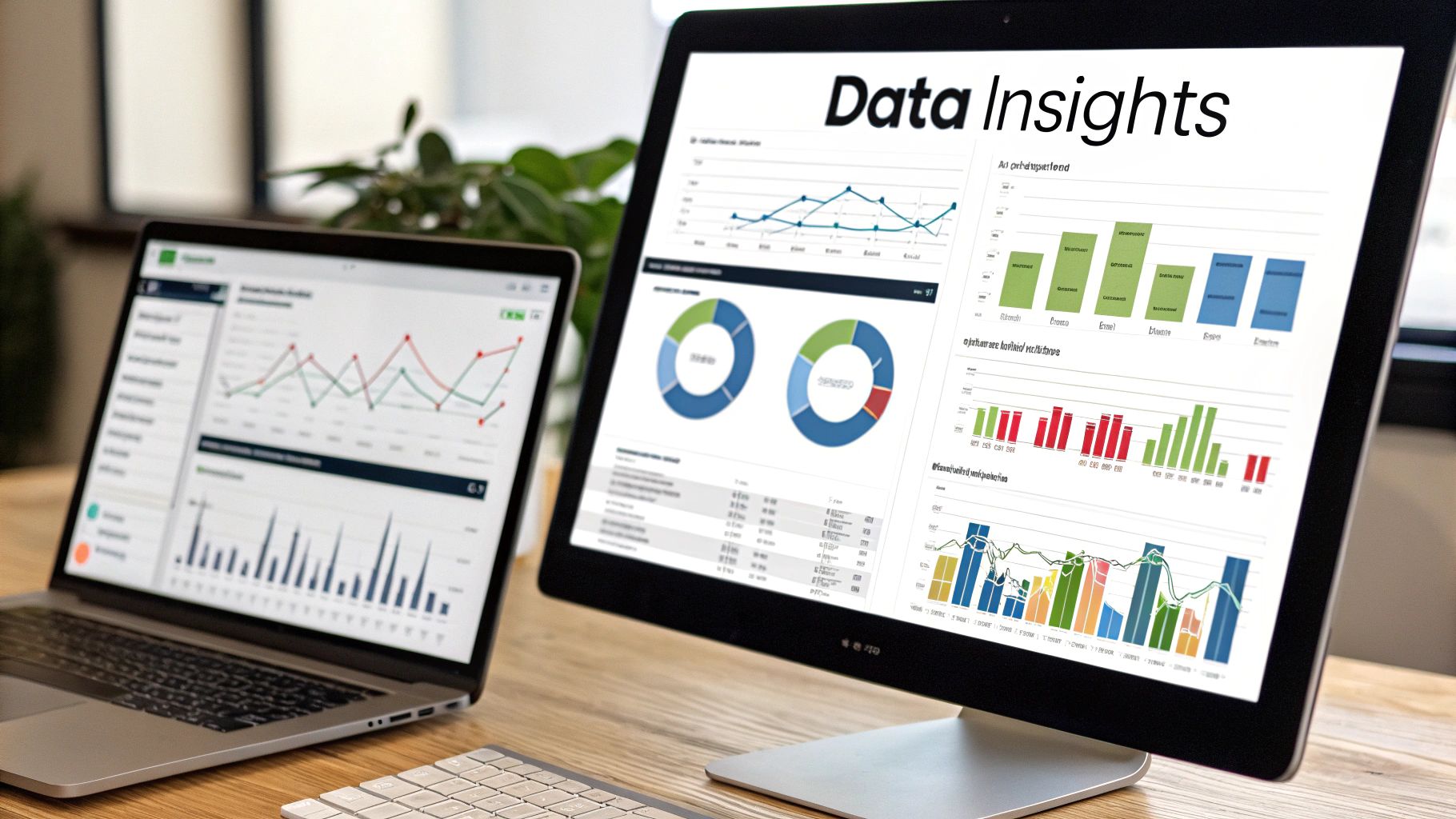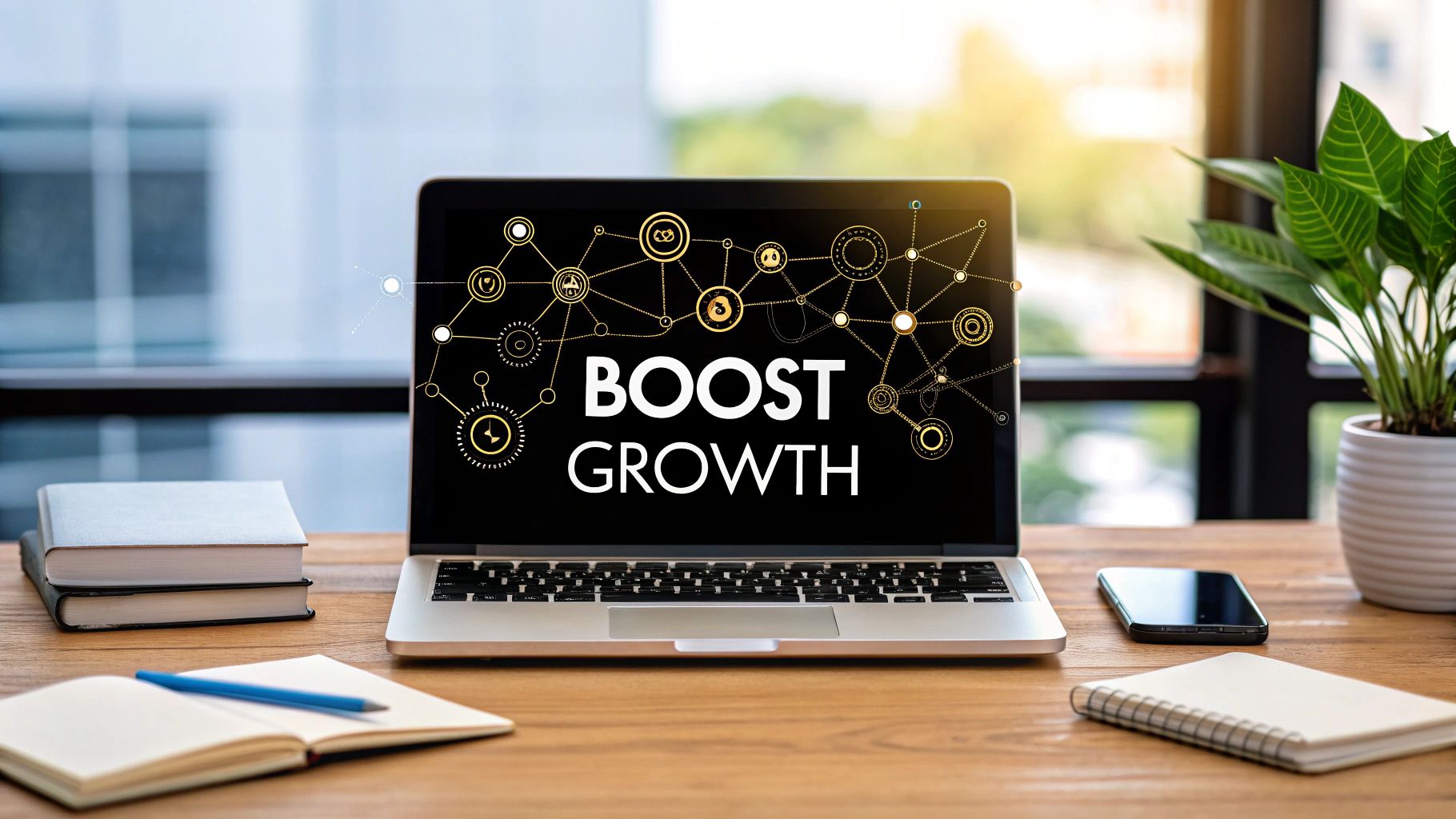Why SaaS Referral Programs Outperform Everything Else

Competition is fierce in today's marketing environment. Traditional channels are becoming increasingly saturated, making customer acquisition both difficult and costly. This is precisely where the strength of SaaS referral programs becomes evident. They capitalize on the natural trust we have in recommendations from our personal networks.
The Power of Word-of-Mouth Marketing
Consider the last time you subscribed to a new software service. Did an advertisement sway you, or was it a recommendation from a friend or colleague? It's highly probable that the personal recommendation carried more weight. This is the fundamental principle behind referral marketing: harnessing the influence of word-of-mouth.
This impact is especially significant for SaaS businesses. Software often necessitates a greater level of trust and comprehension before purchase. A referral serves as a pre-qualification of the product, reassuring potential customers of its value.
Reduced Costs and Increased Customer Value
SaaS referral programs offer inherent cost-effectiveness. Rather than large advertising expenditures, businesses reward existing customers for generating new business. This translates to a considerable reduction in customer acquisition costs (CAC).
Studies indicate that 54% of businesses acknowledge referral programs having a lower cost-per-lead compared to other channels. Moreover, referred customers exhibit a 16% higher lifetime value and increased loyalty. This makes these programs a robust mechanism for sustainable growth. Learn more about the impact of SaaS referral programs here. You may also be interested in How to master SaaS referral programs.
Built-In Scalability for Sustainable Growth
Referral programs offer a unique scalability advantage. As your customer base grows, so does the potential pool of referrers. This creates a compounding effect, with growth organically fueling further growth.
This organic expansion stands in stark contrast to traditional marketing, which frequently requires increased spending to achieve comparable results. This inherent scalability makes referral programs an especially attractive strategy for SaaS companies pursuing sustainable, long-term growth.
The Psychology Behind Referral Success
The success of SaaS referral programs is not solely about cost savings; it’s deeply rooted in psychology. People tend to trust and respond to recommendations from reliable sources. This social proof is a powerful conversion driver, especially for SaaS, where purchase decisions are often complex and involve substantial investment.
When a trusted contact recommends a SaaS product, it significantly reduces uncertainty and perceived risk for the potential customer. Consider Dropbox's referral program, which led to an impressive 3900% increase in signups. This remarkable growth demonstrates the potential of leveraging existing customers to drive new acquisitions. This strategy not only minimizes costs but also cultivates a community of engaged, loyal users.
Measuring What Actually Matters: SaaS Referral Metrics

While SaaS referral programs offer inherent scalability and cost-effectiveness, understanding the right metrics is essential for unlocking their full potential. Simply counting referrals isn't enough. We need to understand the nuances behind these numbers, focusing on metrics that provide real insights into program health and overall growth contribution.
Beyond Vanity Metrics: Focusing on What Drives Growth
Many companies get caught up tracking vanity metrics: numbers that appear impressive but lack substance. For example, a high number of referrals combined with a low conversion rate points to a significant underlying problem.
This underscores the need to move beyond surface-level numbers and concentrate on actionable metrics. This means identifying what's working, what needs tweaking, and benchmarking against your own historical data and goals rather than industry averages. Consider your specific business model and growth stage when setting these benchmarks.
Successfully tracking your SaaS referral program also requires a deeper look at engagement and conversion. Analyze the participation rate to understand how many customers actively engage with the program. The share rate reveals how often referrals are sent, providing insights into program virality. Finally, the referral conversion rate – how many referrals become paying customers – is arguably the most important success indicator. Learn more about refining your SaaS referral program here.
Essential Metrics for Your SaaS Referral Program
From day one, implement a robust tracking system to gain a comprehensive understanding of your program's performance. The following key metrics offer valuable insights:
- Referral Rate: Measures the percentage of new customers acquired through referrals, helping assess the program's overall impact on customer acquisition.
- Participation Rate: Indicates the percentage of existing customers actively involved in the program. A low rate may suggest problems with program visibility or incentives.
- Share Rate: Reveals how frequently customers share referral links. A high share rate indicates strong engagement and positive word-of-mouth.
- Referral Conversion Rate: Measures the percentage of referred leads who convert into paying customers. A high rate signifies valuable, highly qualified leads.
- Customer Lifetime Value (CLTV) of Referred Customers: Comparing the CLTV of referred customers with non-referred customers highlights your program's long-term value.
- Viral Coefficient: Assesses the program's ability to generate exponential growth. A coefficient greater than 1 suggests a self-sustaining program.
High-growth startups often achieve a referral success rate of 8-12%. Leverage tools like Google Analytics, dedicated referral program software like Refgrow, or even spreadsheets to track these metrics and refine your program for greater effectiveness.
The following table summarizes these crucial metrics:
Essential SaaS Referral Program Metrics This table outlines the key metrics every SaaS company should track to measure referral program effectiveness and their significance for business growth.
| Metric | Definition | Target Benchmark | Business Impact |
|---|---|---|---|
| Referral Rate | Percentage of new customers acquired through referrals. | 8-12% | Increased customer acquisition. |
| Participation Rate | Percentage of existing customers actively participating in the program. | As high as possible | Improved program engagement. |
| Share Rate | How often customers share referral links. | As high as possible | Increased brand awareness and reach. |
| Referral Conversion Rate | Percentage of referred leads who convert into paying customers. | As high as possible | Higher quality leads and increased revenue. |
| CLTV of Referred Customers | Comparison of CLTV between referred and non-referred customers. | Higher for referred | Demonstrates the long-term value of the referral program. |
| Viral Coefficient | Program's ability to generate exponential growth through network effects. | >1 | Indicates a self-sustaining program with potential for rapid growth. |
This table provides a framework for evaluating your referral program's success. Remember to tailor benchmarks to your specific business context.
Identifying Early Warning Signs and Adapting Your Strategy
Regular metric monitoring allows you to identify and address potential problems proactively. A sudden drop in the referral or participation rate, for instance, might indicate issues with incentives or messaging. Addressing these issues quickly ensures your program remains effective and continues driving growth.
Creating SaaS Referral Incentives People Actually Want

Designing a successful SaaS referral program requires more than just offering a discount. It involves understanding what motivates your users to recommend your product. This means aligning incentives with your value proposition and creating rewards that resonate with your audience.
Understanding The Psychology of Incentives
Effective SaaS referral incentives tap into our natural tendencies toward reciprocity and recognition. People are more inclined to share when they feel valued and appreciated. Incentives can also amplify the satisfaction of helping others discover a useful product. For example, offering a free month of service benefits both the referrer and their friend.
Designing a successful program means understanding what your users value. Is it monetary rewards, exclusive features, or early access to new releases? The answer depends on your target audience and product. Tracking the right customer engagement metrics is also crucial for referral program success.
Tailoring Incentives To Different Pricing Models
Incentive structures should align with your pricing model. A freemium model might offer premium features as a referral reward, encouraging upgrades. For enterprise solutions, account credits or dedicated support hours could be more appealing.
This adaptability is key for maximizing effectiveness. A double-sided reward system, benefiting both referrer and referee, is often highly effective. The rewards should be tailored to each party's role and needs. The structure and incentives are crucial for success. Double-sided rewards are particularly effective, with over 9 in 10 referral programs using them. 72% offer the same reward to both parties. Dollar credits are the most popular, with $10 being a common value. As 88% of Americans prefer incentives for sharing products, well-designed incentives significantly boost engagement. More detailed statistics can be found here.
Monetary Vs. Non-Monetary Rewards: Finding The Right Balance
While monetary rewards like discounts or account credits are often effective, non-monetary incentives can also be highly motivating. Consider offering exclusive features, early access to new releases, or premium customer support.
Balancing monetary and non-monetary rewards appeals to a broader audience. Some users are driven by financial incentives, while others value exclusive access or recognition. You might be interested in learning more about how to master SaaS affiliate software.
The Importance of Timing and Value Calculation
The timing of incentives significantly impacts conversion rates. Offering rewards immediately after a referral is often more effective than delayed gratification. Accurately calculating the optimal incentive value is also essential. Consider your customer acquisition cost (CAC) and customer lifetime value (CLTV) to ensure profitability and sustainability. This involves analyzing current marketing spend and projecting the long-term revenue from referred customers. By balancing the incentive's value with the potential return on investment, you can create a SaaS referral program that is both effective and financially sound.
Building a SaaS Referral Program That Actually Converts

A well-designed SaaS referral program is more than just a marketing tactic; it's a powerful engine for sustainable growth. Simply launching a program isn't enough. It must be strategically integrated into the user experience, offer compelling incentives for sharing, and efficiently convert referred prospects into paying customers. This section provides a practical guide for building a SaaS referral program that generates tangible results.
Seamless Integration Within the User Journey
The cornerstone of any effective referral program lies in its seamless integration within the user journey. It should feel like a natural extension of the product experience, not a disruptive interruption. This involves making referral options easily accessible within the application. Consider a dedicated menu item, in-app notifications, or even contextual prompts.
For example, imagine a project management tool like Asana. After a user successfully completes a milestone, a subtle notification could appear, suggesting they share their accomplishment and invite colleagues. This type of contextual integration makes the referral process feel organic and relevant.
Crafting Compelling Referral Messaging
Effective referral messaging is crucial for motivating users to spread the word. The message should be clear, concise, and highlight the benefits for both the referrer and the referred friend. Avoid generic calls to action. Instead, opt for personalized messages that resonate with your different user segments.
Focus on the core value proposition of your SaaS product. How does it solve a problem for the user? How can referring a friend benefit them too? By emphasizing the mutual benefits, you can significantly increase the likelihood of a successful referral.
Frictionless Sharing Mechanisms
Sharing should be as effortless as possible. Offer multiple sharing options, including email, social media platforms like Facebook and Twitter, and unique referral links. Pre-populated messages can further streamline the process, minimizing the effort required from the referrer. This ease of use is crucial for encouraging widespread participation.
Consider the success of Dropbox, whose simple link sharing played a significant role in their impressive growth. The easier it is to share, the more likely users are to do so. This frictionless approach is key to maximizing program reach.
Designing High-Converting Landing Pages
Referred prospects often arrive with a higher level of trust and intent compared to other leads. Capitalize on this by crafting dedicated landing pages that reinforce your value proposition and provide a clear call to action. These pages should be optimized for conversions, featuring a streamlined signup process and highlighting the unique benefits of joining through a referral.
Implementation, Fraud Prevention, and Scalability
Selecting the right referral program software is paramount for smooth implementation. Key factors to consider include integration complexity, available features, and pricing. The table below compares several popular platforms:
To help you choose the right software, we've compiled a comparison of popular platforms:
SaaS Referral Program Software Comparison Detailed comparison of top referral program platforms based on features, pricing, and suitability for different SaaS business models
| Platform | Key Features | Price Range | Best For | Integration Complexity |
|---|---|---|---|---|
| Refgrow | Embeddable, automated tracking, Stripe/LemonSqueezy integration, REST API | See Refgrow Pricing | Early-stage startups, product-led growth | Simple, one-line code snippet |
| ReferralCandy | Automated rewards, fraud detection | Varies | E-commerce, subscription businesses | Moderate |
| Mention Me | A/B testing, multi-channel referrals | Varies | Enterprise businesses | Complex |
| Referral Rock | Custom branding, API integration | Varies | Agencies, large businesses | Moderate |
Robust fraud prevention measures are essential for safeguarding the integrity of your program. Implement strong tracking systems to identify and prevent suspicious activity. This may involve monitoring referral patterns, setting limits on referrals per user, and implementing verification procedures.
Finally, ensure your program can scale effectively as your business grows. This might involve automating reward fulfillment, integrating with your CRM, such as Salesforce, and continuously optimizing based on performance data. By addressing these key components, you can build a SaaS referral program that not only converts effectively but also becomes a sustainable source of growth.
SaaS Referral Program Success Stories You Can Learn From
Instead of revisiting tired examples, let's explore recent SaaS referral program success stories. These case studies provide valuable insights into how various companies, from self-serve tools to large enterprise platforms, have achieved significant results.
How Atmoph Created a Thriving Referral Community
Atmoph, a company specializing in digital window displays, developed a successful SaaS referral program that played a key role in its growth. They focused on understanding their customer base, recognizing their appreciation for unique and visually appealing products. This insight shaped their incentive strategy.
Atmoph offered rewards that resonated with their target audience. Their approach highlights the importance of aligning incentives with customer values. The reward structure, including exclusive digital content and early access to new features, appealed directly to their users’ desires.
This strategy resulted in high engagement and a strong sense of community.
Learning From Dropbox’s Simple Yet Effective Approach
Dropbox's rapid growth is often linked to its straightforward yet highly effective referral program. By offering additional storage space, they addressed a primary user need. This simple incentive fueled impressive growth, demonstrating the power of aligning rewards with user requirements.
The seamless integration of the referral program within the Dropbox platform made sharing effortless, further contributing to its widespread adoption. The Dropbox story emphasizes the importance of simplicity and ease of sharing for program success. The program's ease of use encouraged participation, creating a viral growth loop.
This approach demonstrates how a well-designed program can generate exponential growth.
Beyond Discounts: The Value of Non-Monetary Rewards
While discounts and credits can be effective, some SaaS companies have achieved success with non-monetary rewards. For example, a productivity software company might offer early access to beta features as a referral incentive. This appeals to users' desire to be at the forefront of innovation.
It also provides the company with valuable user feedback. SaaS referral programs have a strong track record of boosting customer acquisition and retention. A key metric, the referral rate, often averages around 4.75% for SaaS, exceeding the global average of 2.35%.
This success often stems from the inherent trust within tech communities. Atmoph, for example, achieved a remarkable 24% referral rate. Tracking and optimizing these rates using dedicated tools and implementing double-sided rewards significantly improves performance. You can explore more detailed statistics here.
Testing and Iteration: The Key to Long-Term Success
No referral program is perfect from the outset. Continuous testing and iteration are essential. A/B testing different messaging, reward structures, and sharing mechanisms provides valuable data for optimizing program performance.
Regularly analyzing these metrics helps identify areas for improvement and allows companies to adapt to changing customer preferences. A data-driven approach ensures referral programs remain effective over time. Companies can pinpoint winning strategies, make necessary adjustments, and stay ahead of the curve.
Platforms like Refgrow offer simple integration and powerful features to manage and scale your program effectively.
Avoiding SaaS Referral Program Failures (Real Solutions)
A successful SaaS referral program requires careful planning, execution, and continuous optimization. Many promising programs fall short due to common pitfalls. This section explores these challenges and offers practical solutions from growth leaders experienced in navigating the complexities of referral programs.
Low Program Visibility: Out of Sight, Out of Mind
One of the most common reasons for referral program failure is low visibility. If your users don't know about it, they won't participate. This often happens when referral options are hidden deep within the application or not promoted effectively.
The solution is to make your program prominent and easy to find. Integrate referral prompts within the user flow, such as after a completed task or positive customer interaction. Feature the program in your navigation menu, user dashboard, and regular emails.
Confusing User Experience: Simplicity Is Key
A complex or confusing user experience can deter participation. If users struggle to understand the program or how to refer friends, they'll likely give up.
Prioritize simplicity and clarity in your program's design. Provide clear instructions, concise messaging, and an intuitive referral process. Minimize the steps to make a referral, and offer multiple sharing options, such as email, social media, and unique referral links.
Inadequate Promotion: Spread the Word
Even well-designed programs will fail without sufficient promotion. Don't rely solely on in-app prompts. Use various channels like email marketing campaigns, social media announcements, and blog posts highlighting program benefits. Check out this guide on pricing and features for more information.
Highlighting successful referrals and user testimonials can encourage participation by demonstrating the program's value. Consider running targeted campaigns during peak usage or after product launches to maximize engagement.
Reward Fulfillment Complications: Keep Your Promises
Delayed or complicated reward fulfillment can erode trust and damage your program. Ensure a smooth and timely reward delivery process. Automate reward distribution whenever possible and clearly communicate reward timelines to both referrers and referees.
Consider using dedicated referral program software like Refgrow to automate tracking and reward fulfillment. This minimizes manual effort and ensures a consistent, reliable experience for participants.
Poor Integration with Existing Customer Journeys: A Natural Fit
A successful referral program should feel like a natural extension of the customer journey. Integrate referral prompts contextually within the user experience. For example, after a user completes a key action or reaches a milestone, offer them a chance to share their success and invite friends.
By aligning referral prompts with relevant user actions, you increase engagement and make referrals feel organic. This seamless integration is crucial for maximizing program effectiveness.
Troubleshooting and Proactive Problem Solving
A robust troubleshooting framework is essential for addressing performance issues. Regularly monitor key metrics such as participation rate, referral conversion rate, and customer lifetime value of referred customers. Identify any sudden drops or unexpected trends and investigate the causes. This proactive approach helps you catch and solve potential problems early.
Ready to improve your SaaS growth with a referral program? Visit Refgrow to learn more and get started.

